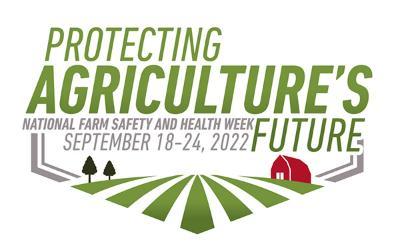COLUMBIA, Mo. – Many consider the farm an ideal place to raise children. But with all its idyllic charm come dangers, says University of Missouri Extension health and safety specialist Karen Funkenbusch.
About every three days, a child dies in an agriculture-related incident, and each day at least 33 children are injured, according to the Marshfield Clinic Research Institute’s National Farm Medicine Center. During the past decade, youth worker fatalities in agriculture have exceeded all other industries combined.
National Farm Safety and Health Week, Sept. 18-24, is a good time to review safety procedures when there are young people working on the farm or visiting.
Tractor rollovers and runovers are the leading cause of childhood deaths on the farm, according to the Childhood Agricultural Safety Network.
“Many traditions on family farms such as riding with Grandpa on the tractor or lawn mower or playing hide-and-seek around grain bins can turn deadly in a flash,” says Funkenbusch. “For safety’s sake, avoid these practices. It’s easier to bury a tradition than it is to bury a child.”
Make children aware of the potential dangers and do not be afraid to correct unsafe behaviors, Funkenbusch says. The best safety lessons come from modeling safe practices.
Funkenbusch recommends a family meeting during National Farm Safety and Health Week to discuss farm safety for children:
- Practice a “no extra riders” policy on the farm. Don’t take children on tractors, skid steers, mowers or ATVs. Don’t give rides in buckets or on laps.
- Remove keys from farm equipment to discourage curious children from taking a joyride that will rob you of your pride and joy.
- Remind children to stay away from grain wagons, grain bins, silos and manure pits. Each of these present dangers to people of all ages.
- Lock and secure chemicals, pesticides and hazardous materials.
- Take a walking tour of the farm to check for items that could fall on children, such as stacks of tires, gates, building materials and seed sacks.
- Check for drowning hazards. Install fences around ponds and manure pits.
- Designate a safe, fenced-in area where children can play.
- Review emergency procedures such as who and how to call in the event of emergencies. Review where to go in the event of fires, storms and tornadoes, and designate a meeting place.
- Talk about appropriate personal protective equipment, proper attire and the importance of wearing sunscreen.
The National Education Center for Agricultural Safety offers an online safety checklist at National Farm Safety and Health Week.

National Farm Safety and Health Week stories from MU Extension
- Farming: The most dangerous job in the U.S.
- Missouri farmers seeking rollover protection devices for tractors
- Review safety practices on the farm with children
- MU Extension offers mental health resources for farmers, ranchers
- New AgriStress Helpline available to Missouri farmers
- Make your mowing habits a cut above
- Take care when driving in Amish, Mennonite communities
- Safety no accident, says family of tractor rollover victim